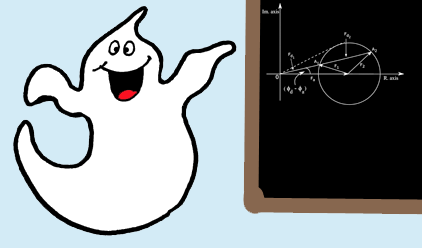No such thing as ghosts?

Crystallographers are always pushing boundaries when it comes to determining complex structures with less than optimal experimental data.
We've already heard that 'there's no such thing as a free lunch' [Caliandro et al. (2005). Acta Cryst. D61, 556-565 and 1080-1087]; now comes another improbable-sounding approach: The Phantom Derivative (PhD) method [Giacovazzo (2015). Acta Cryst. A71, 483-512; doi:10.1107/S2053273315013856]. PhD is based on the random generation of 'ancil' structures with the same unit cell and the same space group as the target structure. These are used to create 'derivatives' that have no experimental diffraction amplitudes, but which assist in solving the target structure from scratch (ab initio structure determination).
Giacovazzo uses the term 'derivative' in analogy with isomorphous replacement techniques, in which one or more variants of the target structure containing different heavy atoms (but retaining the same unit cell) are actually prepared and used to collect diffraction data. However, he notes that the differences in the methods are much greater than the analogies, as stressed by the 'phantom' nature of the data - there are none! Indeed, the ancil structures need not contain heavy atoms, needn't be closely related to the target structure, and don't even have to be realistic.
A companion paper [Burla et al. (2015). Acta Cryst. D71, 1864-1871; doi:10.1107/S1399004715013024] describes how PhD can be used in protein crystallography to extend and refine phase sets obtained by molecular-replacement techniques. In this, it is competitive with any other current approach. Indeed, the best results were obtained by integrating PhD with existing density-modification, Vive la Difference and free-lunch techniques.
It remains to be seen how PhD will perform when it comes to ab initio structure solution. It is possible that, for the first time in crystallographic history, we may have a technique capable of solving structures from relatively poor data (only up to 4-6 Å resolution) and without any upper limit to the complexity of the structure. PhD is also likely to prove useful when combined with any ab initio or non-ab initio phasing technique: these two new papers just open the way.
Who said there is no such thing as ghosts?
Provided by International Union of Crystallography





















